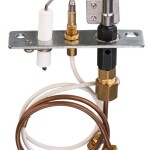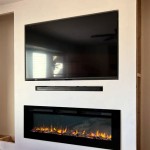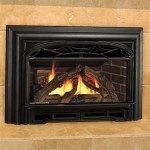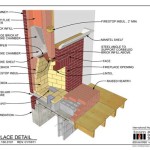Do Electric Fireplaces Save Money? Analyzing Cost-Effectiveness
Electric fireplaces have gained significant popularity as a supplemental heating source and decorative element in homes. A key factor driving this interest is the potential for cost savings compared to traditional heating methods. However, determining whether an electric fireplace ultimately saves money requires careful consideration of various factors, including energy consumption, heating efficiency, usage patterns, and alternative heating options.
This article explores the economics of electric fireplaces, delving into the various aspects that influence their cost-effectiveness. It examines the initial investment, operational expenses, and potential benefits, allowing homeowners to make informed decisions about whether an electric fireplace aligns with their financial goals and heating needs.
Initial Investment and Installation Costs
The upfront cost of an electric fireplace is generally lower than that of a traditional fireplace (wood-burning or gas) or a central heating system. Electric fireplaces range in price from a few hundred dollars for basic models to several thousand dollars for more elaborate units with advanced features. The cost depends on factors such as size, style, material, brand, and additional features like realistic flame effects, remote control, and built-in thermostats.
Installation costs for electric fireplaces are typically minimal. Most units are designed for simple plug-and-play operation, requiring no professional installation. Wall-mounted or insert models may necessitate minor modifications to the wall or existing fireplace opening, but these are usually straightforward and less expensive than the complex installation procedures associated with gas or wood-burning fireplaces, which often require venting systems, gas lines, or chimney construction.
The absence of extensive installation requirements makes electric fireplaces an attractive option for homeowners who want to avoid significant upfront costs and the hassle of coordinating with contractors. This lower initial investment can contribute to overall cost savings, especially for individuals seeking a supplementary heating solution without long-term commitment.
Energy Consumption and Operating Costs
The operating cost of an electric fireplace is primarily determined by its energy consumption, measured in watts or kilowatts (kW). Electric fireplaces typically range from 1,000 to 1,500 watts (1 to 1.5 kW) when running at their highest heat setting. To calculate the hourly operating cost, one must multiply the wattage (converted to kilowatts) by the local electricity rate (price per kilowatt-hour, kWh).
For example, if an electric fireplace consumes 1.5 kW and the electricity rate is $0.15 per kWh, the hourly operating cost would be 1.5 kW x $0.15/kWh = $0.225 per hour. The actual operating cost will vary depending on the specific model, heat setting, and the duration of use. Many electric fireplaces offer adjustable heat settings, allowing users to reduce energy consumption when less heat is required. Some also include thermostats that automatically turn the unit off when the desired room temperature is reached, further minimizing energy waste.
Compared to other heating sources, the energy efficiency of electric fireplaces is often high. Since they convert virtually all of the electrical energy into heat, there is minimal energy loss through venting or exhaust. This contrasts with gas or wood-burning fireplaces, where a significant portion of the heat escapes through the chimney. However, the overall cost-effectiveness depends on how efficiently the electric fireplace heats the desired space compared to other heating options.
It is important to note that electricity rates vary significantly depending on geographic location and time of day. In areas with high electricity costs, the operating cost of an electric fireplace can be substantial, especially with frequent use. Homeowners are encouraged to research their local electricity rates and consider alternative heating options if electric rates are particularly high.
Heating Efficiency and Zone Heating
Electric fireplaces are most effective as zone heating solutions, focusing heat on a specific area rather than heating an entire house. This can lead to cost savings by allowing homeowners to lower the thermostat for the central heating system and only heat the room they are currently occupying. For example, if a homeowner spends most of their time in the living room, they can use an electric fireplace to keep that room warm while reducing the overall heating demand on the central furnace.
The heating capacity of an electric fireplace is typically measured in British Thermal Units (BTUs). Most models are capable of producing around 4,000 to 5,000 BTUs, which is sufficient to heat a small to medium-sized room. However, the actual heating performance depends on factors such as the room's insulation, ceiling height, and the presence of drafts. In poorly insulated rooms, the heat generated by the electric fireplace may dissipate quickly, requiring it to run continuously and consume more energy.
When used as a supplemental heating source in a well-insulated room, an electric fireplace can contribute to significant cost savings. By reducing the reliance on the central heating system, homeowners can lower their overall energy bills. However, in larger spaces or homes with poor insulation, an electric fireplace may not be sufficient to provide adequate warmth and may end up being a less cost-effective solution.
Smart thermostats can further enhance the efficiency of electric fireplaces. These devices allow homeowners to remotely control the temperature and set schedules, ensuring that the fireplace only operates when needed. Some smart thermostats can even learn user preferences and automatically adjust the heat settings to optimize energy consumption. Integrating a smart thermostat with an electric fireplace can maximize energy savings and improve overall comfort.
Comparison to Alternative Heating Options
To accurately assess the cost-effectiveness of electric fireplaces, it is essential to compare them to alternative heating options, such as central heating systems (furnaces or heat pumps), gas fireplaces, wood-burning stoves, and portable space heaters. Each of these options has its own advantages and disadvantages in terms of initial cost, operating expenses, and heating efficiency.
Central heating systems are generally the most efficient option for heating an entire house, but they can be expensive to install and operate, especially in older homes with poor insulation. Gas fireplaces offer a more aesthetic appeal and can provide significant heat output, but they require venting systems and gas lines, which can add to the installation cost. Wood-burning stoves are a traditional option, but they require a reliable source of firewood and can be messy and require ongoing maintenance.
Portable space heaters, like electric fireplaces, are a flexible and relatively inexpensive option for zone heating. However, they often have lower energy efficiency than electric fireplaces and may pose safety risks if not used properly. Some space heaters, such as oil-filled radiators, can provide more consistent heat output but may take longer to heat up a room.
When comparing electric fireplaces to these alternatives, homeowners should consider their specific heating needs, budget constraints, and energy consumption patterns. If the primary goal is to supplement the central heating system and heat a small to medium-sized room, an electric fireplace can be a cost-effective solution. However, if the goal is to heat an entire house or replace a central heating system, other options may be more efficient and economical in the long run.
Another important factor to consider is the environmental impact. Electric fireplaces produce no emissions directly, making them a cleaner alternative to gas or wood-burning fireplaces. However, the electricity used to power the fireplace may be generated from fossil fuels, which can contribute to greenhouse gas emissions. Homeowners who are concerned about the environmental impact may want to consider purchasing electricity from renewable sources or investing in energy-efficient appliances to offset their carbon footprint.
Ultimately, determining whether an electric fireplace saves money requires a comprehensive analysis of individual circumstances. By carefully evaluating the initial cost, operating expenses, heating efficiency, and alternative heating options, homeowners can make informed decisions about whether an electric fireplace is the right choice for their needs and budget.

How To Save Money On Heating With Electric Fireplaces Twin Star Hometwin International

ᑕ❶ᑐ Electric Fireplace Cost Ysis Magikflame

Cost To Run An Electric Fireplace 8 Saving Tips Calc

Are Electric Fireplaces Energy Efficient We Love Fire

How Much Does It Cost To Run Electric Fireplace In 2024

Electric Fireplaces Do They Really Heat A Room And Save Money Westernwheel Ca

Does Using A Fireplace Save You Money On Your Utilities Barefoot Budgeting

Do Fireplaces Save Money On Energy Costs

Are Electric Fireplaces Energy Efficient We Love Fire

Are Electric Fireplaces Worth The Money Modern Blaze
Related Posts








